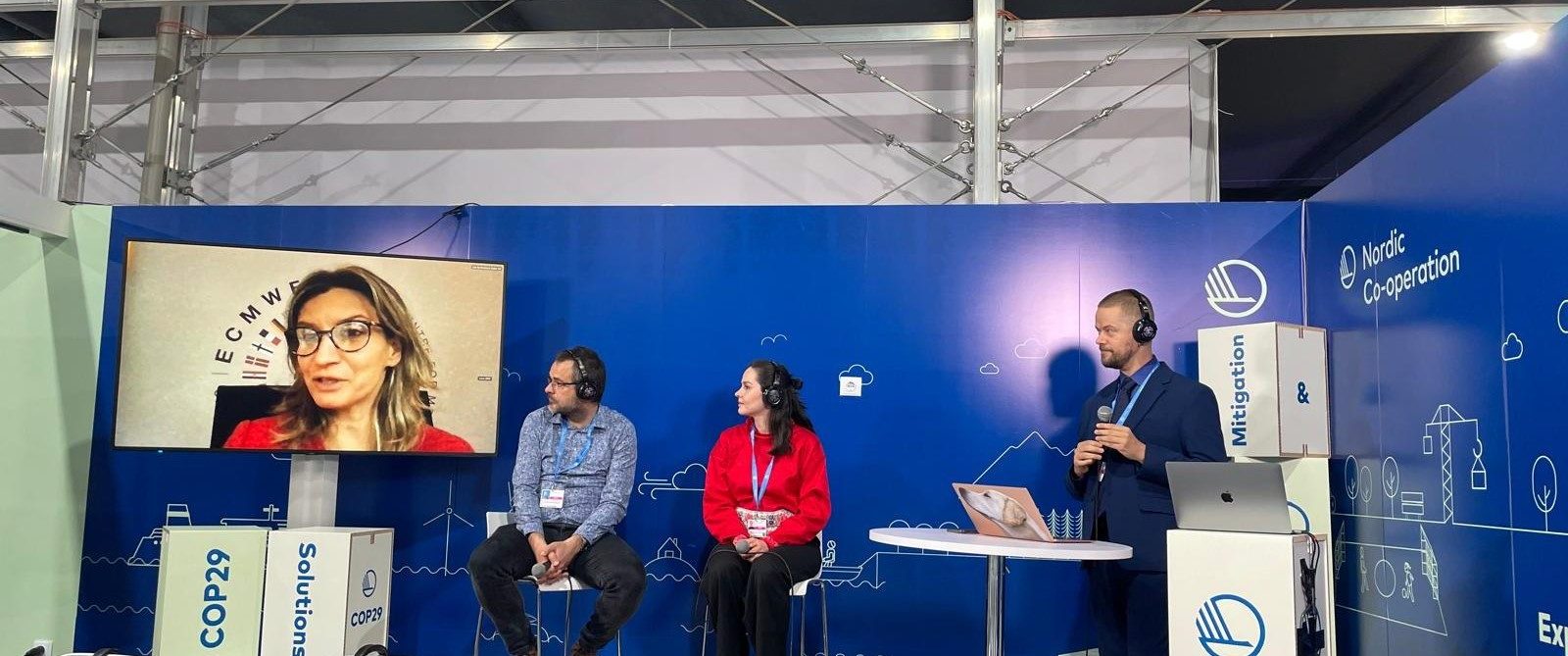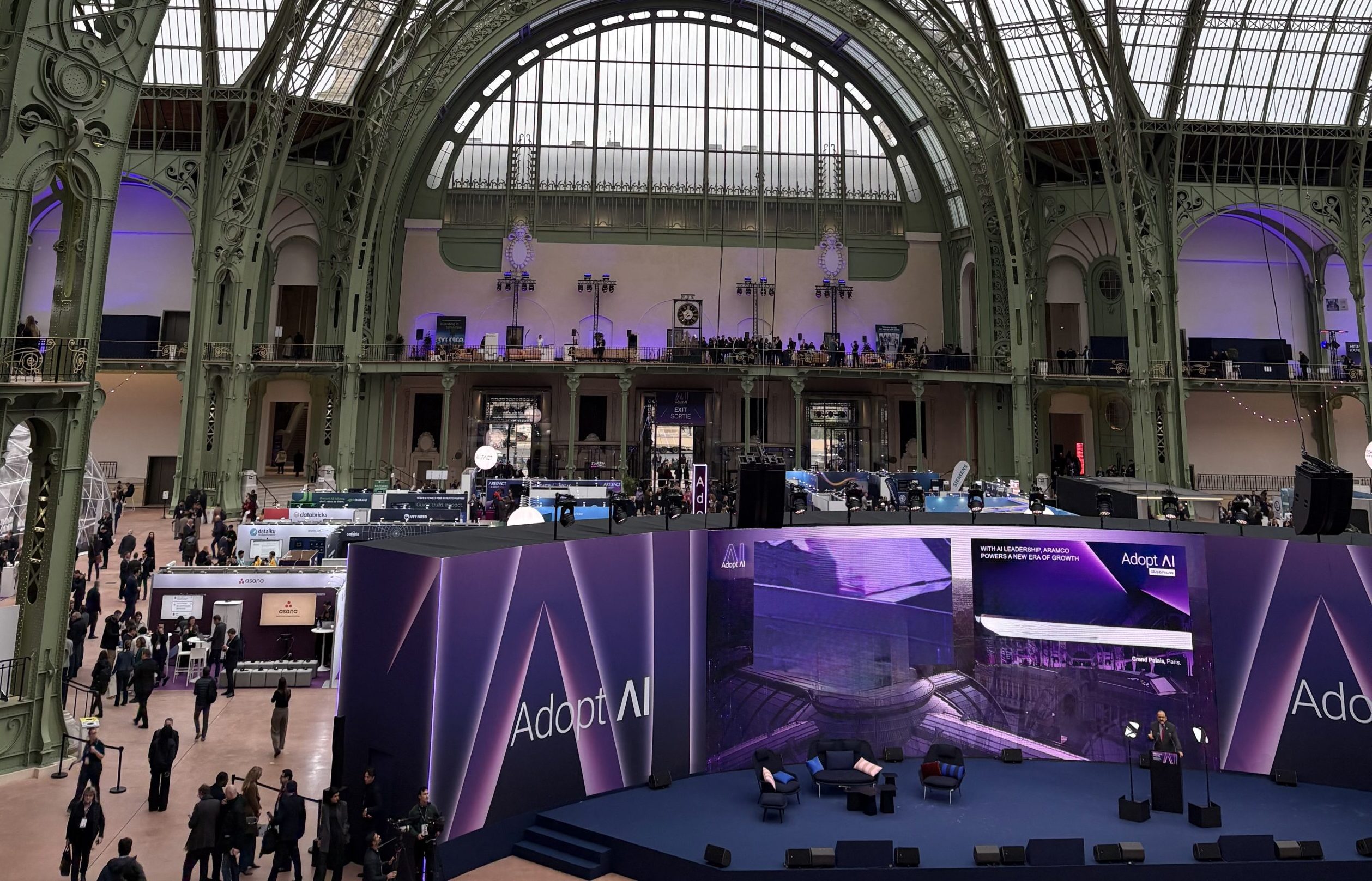
Destination Earth’s Climate Change Adaptation Digital Twin (Climate DT) featured on Saturday 16 November at COP26 in Baku, Azerbaijan. It was the second time that the ambitious initiative led by the European Commission’s DG CNECT was present at a Conference of the Parties of the United Nations Framework Convention on Climate Change. A panel moderated by CSC – IT Center for Science explored the value of global and local digital twins in support of climate change adaptation.
Irina Sandu, Director for Destination Earth at ECMWF participated in the panel discussion, presenting the efforts to develop the Climate DT, a novel operational capability for multi-decadal projections at km-scale and the Weather-induce Extremes Digital Twin (Extremes DT), along with partner institutions from across Europe.
CSC-IT Center for Science is developing the Climate DT with an international consortium including excellence centers in climate science and computing, through a contract issued by ECMWF.
CSC’s Programme Manager Tero Aalto moderated the session at the Nordic Council of Ministers Pavilion, focused on “Global and Regional Approaches to Cryosphere and Related Climate Challenges.”
“It was an informative discussion,” said Irina Sandu. “The panel highlighted the value of digital twin information for sensitive regions such as the Arctic regarding climate change. The digital twins we are developing in the context of the EU’s DestinE initiative together with many partners across Europe provide bespoke simulation capabilities that will allow us to explore what-if scenarios regarding the evolution of the Earth system. What sets DestinE’s Digital Twins apart is the combination of unprecedented computing capacity with an infrastructure which tightly couples Earth-system and impact-sector models and offers high levels of interactivity. This will allow tailoring simulations to the users’ specific needs. These levels of customisation are not possible in current prediction systems, where the configurations are largely fixed. In addition, we are providing high-resolution multi-decadal earth-system and impact sector information globally.”
Watch the full panel discussion:
The Climate DT is also the first attempt to operationalise climate projections, and will be producing simulations regularly (e.g. yearly), compared to current research-based systems that are only run in the CMIP exercises every seven years.
The panel in Baku also included the Special Advisor Avijâja Rosing-Olsen from the Ministry of Agriculture, Self-Sufficiency, Energy and Environment of the Government of Greenland, and Sea Ice Scientist at the Danish Meteorological Institute DMI Till Soya Rasmussen, that discussed the initiatives to develop a Nordic Cryosphere Digital Twin (NOCOS DT).
The NOCOS DT project explores the suitability of digital twin technologies for sea-ice dependent sectors in the Nordic and Baltic regions, in particular showcasing the value of initiatives like DestinE and its Climate DT.
Avijâja Rosing-Olsen described her work on the ground with the indigenous communities in Greenland that are eager to obtain more accurate information about the changing sea ice, from which their way of living depends.
“A key difference of the Climate DT is that it is global, but will provide the information with local granularity, being able to support those communities that depend on so much local information about changes in sea ice or in storms, as we have just listened from the fascinating account from Avijâja.”
As a conclusion, guests were asked about the main challenges to exploit these state-of-the-art technologies for the benefit of society and ultimately the users and the sectors and communities most impacted by climate change.
Director for DestinE at ECMWF mentioned that it was certainly challenging to adapt the Digital Twin Earth system simulations to the extreme scale supercomputers of the EuroHPC Joint Undertaking, including LUMI, in Finland, hosted by the CSC IT Center for Science; but that being successful in doing so it is certainly rewarding as it allows to translate European investments in supercomputing into benefits for the society
Another key challenge is the integration of the machine learning and artificial intelligence techniques that have experienced a revolution in recent years with the traditional physics-based models. This can open many opportunities for further enhancing the digital twin capabilities and is therefore one of the priorities of phase 2 of the initiative.
It was the second time that DestinE was present at a COP meeting, only two and a half years after the launch. In 2022, Irina Sandu outlined the ambitious objectives of the initiative and how it planned to support Europe’s green objectives, during an event organised by the European Commission’s Directorate-General for the Digital Age (DG CNECT) at COP27.
Today, more than ever, DestinE is becoming reality with the Destination Earth platform open to users and the digital twins producing the first simulations and datasets, with promising results in terms of data quality and relevance for the sectors most impacted by climate change.
Destination Earth is a European Union-funded initiative launched in 2022, with the aim to build a digital replica of the Earth system by 2030. The initiative is being jointly implemented under the leadership of DG CNECT by three entrusted entities: the European Centre for Medium-Range Weather Forecasts (ECMWF), responsible for the creation of the first two ‘digital twins’ and the ‘Digital Twin Engine’, the European Space Agency (ESA) responsible for building the ‘Core Service Platform’, and the European Organisation for the Exploitation of Meteorological Satellites (EUMETSAT), responsible for the creation of the ‘Data Lake’.
We acknowledge the EuroHPC Joint Undertaking for awarding this project strategic access to the EuroHPC supercomputers LUMI, hosted by CSC (Finland), and the LUMI consortium, Marenostrum5, hosted by BSC (Spain) Leonardo, hosted by Cineca (Italy) and MeluXina, hosted by LuxProvide (Luxembourg) through a EuroHPC Special Access call.
More information about Destination Earth is on the Destination Earth website and the EU Commission website.
For more information about ECMWF’s role visit ecmwf.int/DestinE
For any questions related to the role of ECMWF in Destination Earth, please use the following email links:


